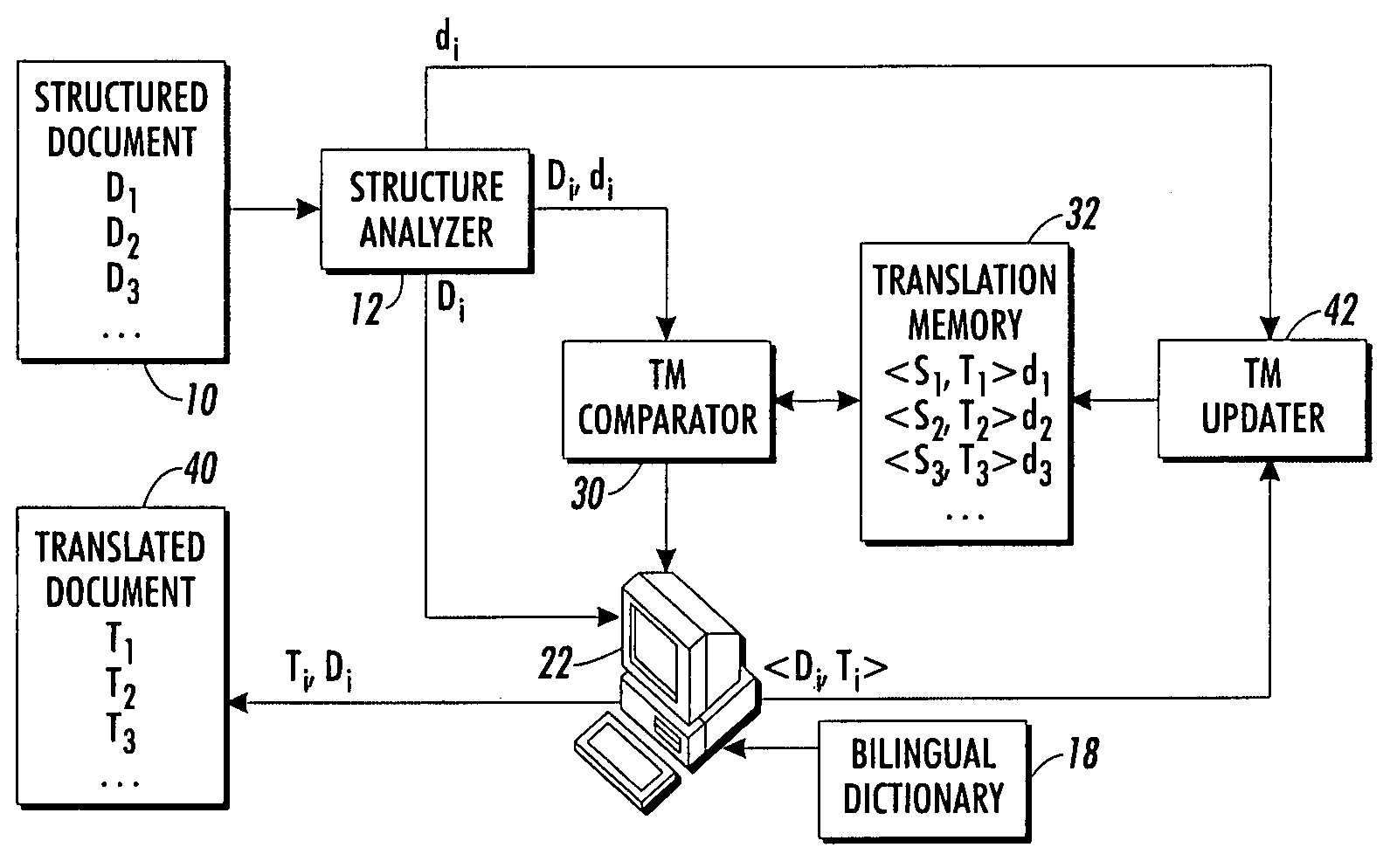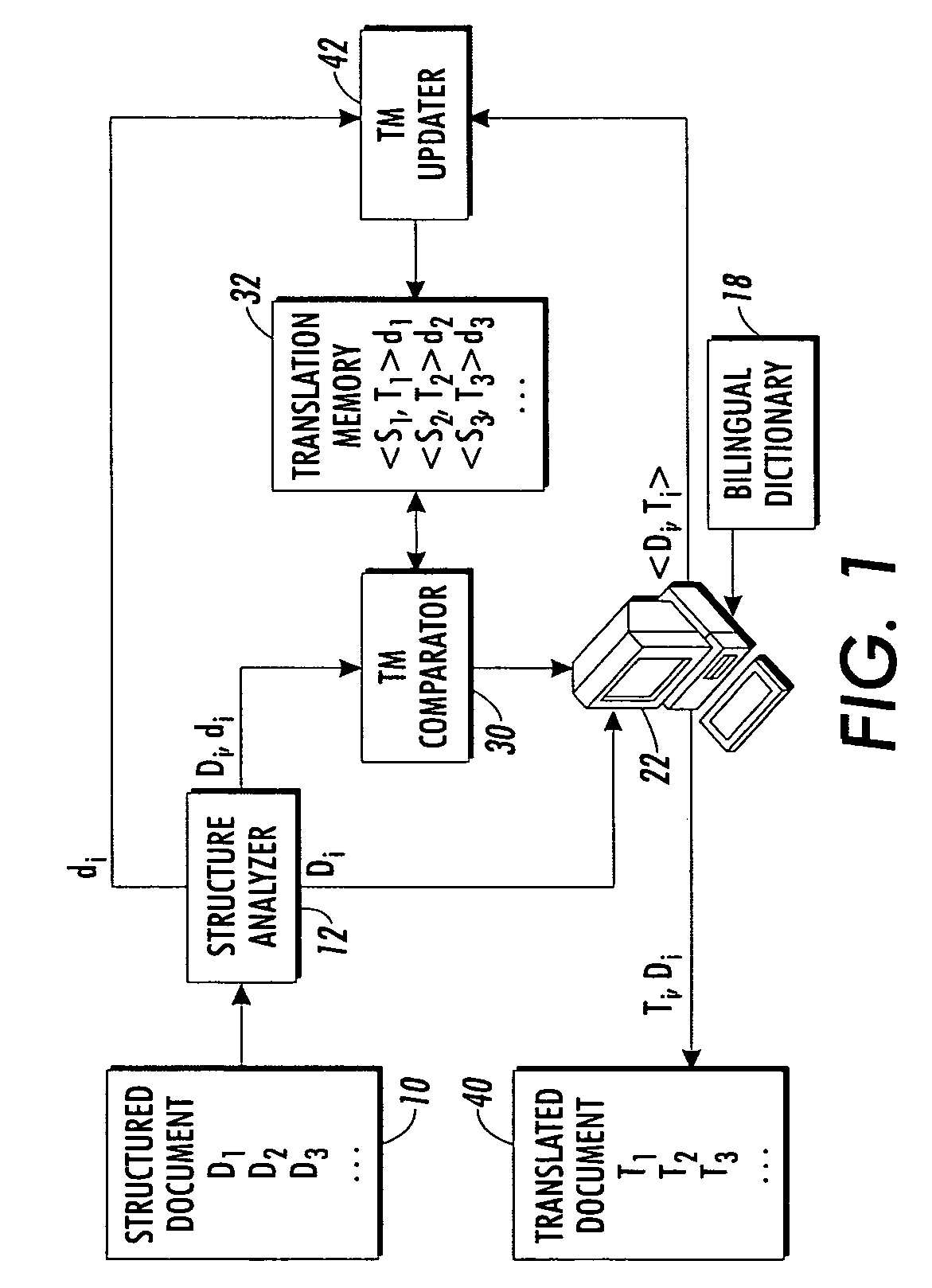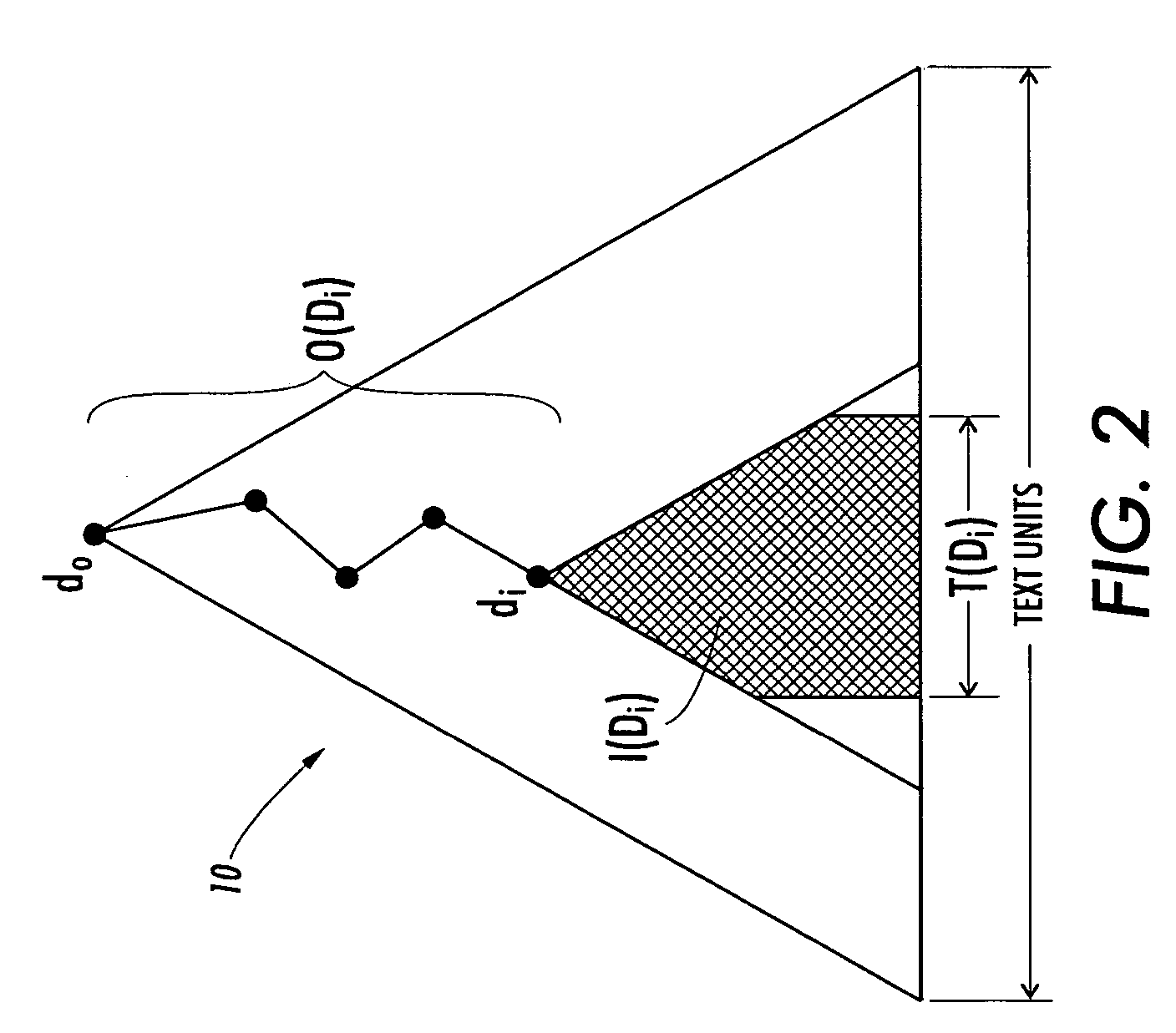Retrieval method for translation memories containing highly structured documents
a technology of highly structured documents and retrieval methods, applied in the field of natural language translation, can solve the problems of increasing the productivity of translators, reducing the value of translation memory, and losing the surround contextual information,
- Summary
- Abstract
- Description
- Claims
- Application Information
AI Technical Summary
Benefits of technology
Problems solved by technology
Method used
Image
Examples
Embodiment Construction
[0015]With reference to FIG. 1, a new source document 10 having content in a source language is to be translated into a target language. As just one illustrative example, in some embodiments the source language may be French and the target language may be English. In general, the source language can be any written or symbolic language, and the target language can be any other written or symbolic language. The source document 10 is a structured document in which the textual content is organized in accordance with a document annotation scheme such as extensible markup language (XML), standard generalized markup language (SGML), hypertext markup language (HTML), or so forth. A structure analyzer 12 analyzes the structured document 10 to determine a set of new source language translation units D1, D2, D3 . . . and outputs each new source language translation unit (denoted “Di”) in turn for translation.
[0016]The new structured document 10 can be represented as a rooted, labeled, ordered ...
PUM
 Login to View More
Login to View More Abstract
Description
Claims
Application Information
 Login to View More
Login to View More - R&D
- Intellectual Property
- Life Sciences
- Materials
- Tech Scout
- Unparalleled Data Quality
- Higher Quality Content
- 60% Fewer Hallucinations
Browse by: Latest US Patents, China's latest patents, Technical Efficacy Thesaurus, Application Domain, Technology Topic, Popular Technical Reports.
© 2025 PatSnap. All rights reserved.Legal|Privacy policy|Modern Slavery Act Transparency Statement|Sitemap|About US| Contact US: help@patsnap.com



